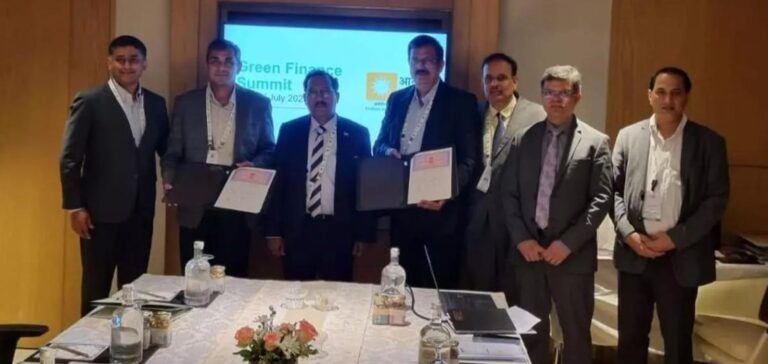Indian renewable energy company Avaada is planning vertically integrated renewable hydrogen and derivative projects, with the former to be operational by 2026-2027, Avaada chairman Vineet Mittal told S&P Global Commodity Insights on August 16.
Ambitious expansion: Avaada invests in ammonia and renewable hydrogen in India
The Mumbai-based company has signed a Memorandum of Understanding (MoU) with the Indian state of Rajasthan for a 1 million tons per year renewable ammonia plant, and recently signed another MoU with the federal government’s Renewable Energy Certificate (REC) for a $2.44 billion loan.
“The Avaada group plans to add significant green fuel production capacity by the end of 2030 – this will be a combination of green hydrogen/ammonia, renewable methanol, sustainable jet fuel and any other green derivatives,” said Mittal in his written answers to S&P Global’s questions.
The first project should be operational within the next 3 to 4 years, and additional units should be commissioned before 2030, he added. The funds raised by the CER come “either directly, or via the KfW and World Bank credit line”, said Avaada after signing its memorandum of understanding on July 20 on the sidelines of the G20 energy ministers’ meeting in Goa. It will finance several renewable energy projects over the next five years.
Avaada targets 30 GW of solar power by 2030 after major deal for renewable ammonia in Rajasthan
The group, which has 4 GW of operational solar power plants, made news in August 2022 when it signed a memorandum of understanding with Rajasthan for its renewable ammonia project in Kota, at a cost of 400 billion rupees ($4.81 billion). This unit will be designed to “meet domestic demand […] the Indian market is still developing and the future looks promising”, said Mittal.
Avaada also owns a 1.25 GW solar power plant in Bikaner, Rajasthan. Its other solar power plants are located in states such as Uttar Pradesh, Tamil Nadu, Karnataka and Bihar, and it aims to increase its solar portfolio to 30 GW by 2030. Platts valued Middle East renewable-derived ammonia delivered to the Far East (with high cost and freight) at $786.65/mt on August 14, up 0.64% on the previous month, according to S&P Global data. Platts-valued Middle East renewable ammonia derivatives delivered in North-West Europe (with high cost and freight) stood at $802.65/mt on August 14, up 0.50% on the previous month.
Avaada seeks financing: New green fuel projects in the pipeline
Fundraising continues, with Mittal stating that the group is seeking additional funds for its new fuel projects.
“We have raised equity from Brookfield, mainly to develop our green hydrogen projects. In addition, we are also in contact with many other investment funds to provide capital,” he said. “Similarly, with regard to debt, discussions are underway with numerous banks and financial institutions.”
Brookfield Renewables, through its Brookfield Global Transition Fund, has committed to invest up to 82.25 billion rupees in the Avaada Group, according to information published on the Avaada website. In addition, Avaada recently announced the closing of a 107 billion rupee financing round.
Global Power Synergy strengthens its investment in Avaada for ambitious renewable projects
Meanwhile, Global Power Synergy Public Company, an existing shareholder in Avaada’s renewable energy activities, has committed to increasing its capital by investing a further 24.75 billion rupees. Over the next five years, Avaada is set to leverage this investment to launch renewable energy projects across India.
“We have raised capital for all our business areas: manufacturing, renewable energy and hydrogen/green ammonia production. Due to confidentiality clauses with investors, we cannot communicate the breakdown between the different activities,” said Mr. Mittal. “We won the tender for the production-related incentive, which includes a 3 GW integrated ingot (and) module plant. We have completed most of the preparatory work and are in the midst of discussions with a number of states to set up solar energy manufacturing plants,” he added.
The Indian government allocated 195 billion rupees to PLI for the manufacture of high-efficiency solar photovoltaic modules in the 2022-23 budget, following which Solar Energy Corp of India launched a tender and announced the results in May.
Avaada plans local implementation of electrolyzer production as part of national green hydrogen initiative
Mittal said he was evaluating SECI’s electrolysis manufacturing tender launched in July as part of the government’s Strategic Interventions for Green Hydrogen Transition Scheme, part of the National Green Hydrogen Mission, with an investment of 197.44 billion rupees up to 2029-30.
“The Group has already taken the decision to own and set up electrolyser production capacity in India. As far as this tender is concerned, we are in the process of evaluating it […] the decision to participate will be taken at the appropriate time”, said Mr. Mittal.
The company is technology agnostic and will choose the most mature and efficient electrolysis option to achieve the lowest cost of renewable hydrogen, he added.
Avaada plans global reach for its renewable energy and green molecules projects
According to Mr. Mittal, Avaada is in talks with several buyers in India, the EU and Asia. Potential buyers include a mix of end-users from the fertilizer, chemical, steel and shipping industries, as well as brokers.
“India’s natural advantage in low-cost, large-scale renewable energy projects, robust transmission grid, availability of a skilled and abundant workforce, favorable government policies and incentives, availability of abundant renewable energy sources, will make India one of the best countries to meet the global demand for green molecules,” said Mr. Mittal.
The company plans to “take the decision to have a physical presence in the US at the appropriate time”, although it is keen to pursue export opportunities to the US, particularly for solar modules, said Mittal, ruling out any possibility of projects in the Middle East and Australia for the time being.






















